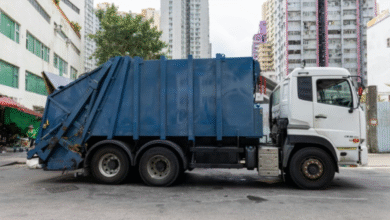Becoming a Certified K9 Handler: What You Need to Know

Working as a K9 handler is a highly respected role within law enforcement, military operations, and private security. Handlers don’t just manage trained dogs; they lead working partners capable of detecting threats, tracking suspects, and executing critical fieldwork. To meet these demands, professionals must complete a K9 handler course that goes beyond basic training and builds a deep foundation of operational readiness, communication, and control.
What a K9 Handler Course Includes
A K9 handler course is designed to develop both technical and tactical skills through structured classroom instruction and field-based exercises. These courses typically begin with canine behavior fundamentals, reading body language, recognizing stress indicators, and understanding breed-specific traits. Handlers learn to build trust with their dog before progressing to complex tasks.
As training advances, the curriculum covers obedience handling, scent detection, tracking, apprehension control, and scenario-based problem-solving. Handlers are taught how to issue clear verbal and non-verbal commands, read the dog’s signals, and maintain control in high-pressure situations. Equally important, handlers are trained in safe transport, emergency care, and how to de-escalate or disengage when needed.
Where to Enroll in a Reputable Program
Choosing the right program is critical. The article on where to enroll in a K9 handler program outlines the key components that distinguish top-tier training academies from generic courses. Accreditation, instructor experience, real-world scenario drills, and post-certification support are all markers of a strong curriculum.
Professional programs also emphasize handler accountability. Participants are tested on legal responsibilities, ethics of canine deployment, and report documentation for use in investigations and court proceedings. A good course ensures you not only pass certification exams but also walk away with actionable knowledge and skills that apply in the field.
Scenario-Based Training Is a Must
While classroom learning provides theoretical knowledge, it’s scenario-based training that prepares handlers for real-world deployment. Exercises such as building searches, high-risk stops, and suspect apprehensions simulate unpredictable field conditions that demand quick thinking and tactical execution.
This is why the concept of scenario-based training remains crucial in modern K9 handler courses and is central to high-quality education. These drills create muscle memory, improve communication between dog and handler, and enhance the handler’s ability to stay calm under stress. Practical repetition also helps dogs interpret environmental cues more accurately, increasing their effectiveness in live operations.
Certification and Beyond
Upon successful completion of the course, participants are issued a certification recognized by law enforcement or private sector agencies. However, becoming a certified handler is only the beginning. Continuing education is often required to stay current with training protocols, legal updates, and new tactical techniques.
Handlers may also pursue specialized certifications in narcotics detection, explosives detection, patrol work, or search and rescue. Each specialization adds another layer of responsibility and skill to the handler’s profile, opening doors to more advanced fieldwork and career progression.
Conclusion
Becoming a certified K9 handler requires dedication, discipline, and a willingness to work as a cohesive team with your canine partner. Through a comprehensive K9 handler course, professionals learn how to lead, train, and deploy dogs in dynamic environments. By choosing an accredited program and engaging in scenario-based instruction, handlers position themselves for a successful and impactful career in K9 operations.




